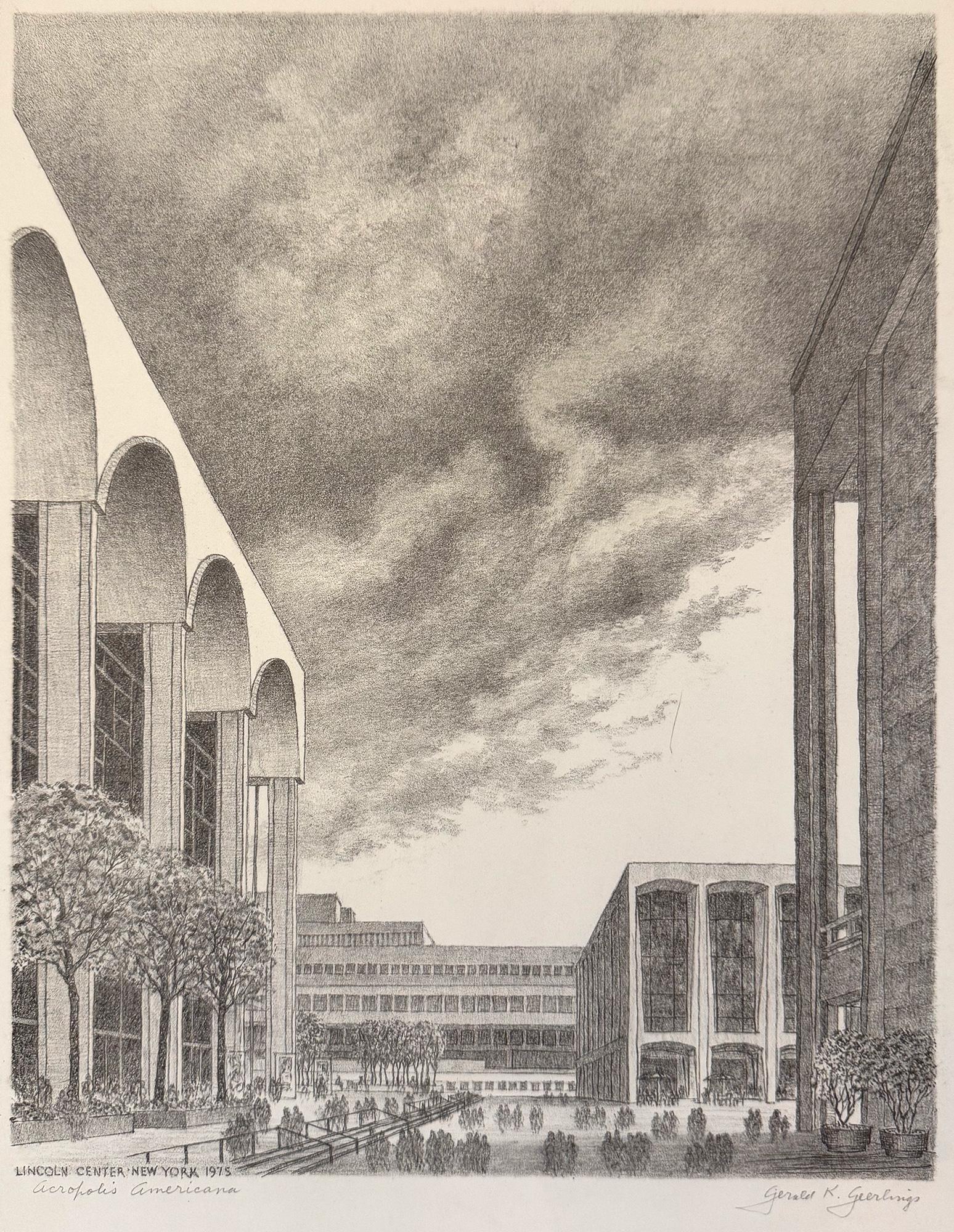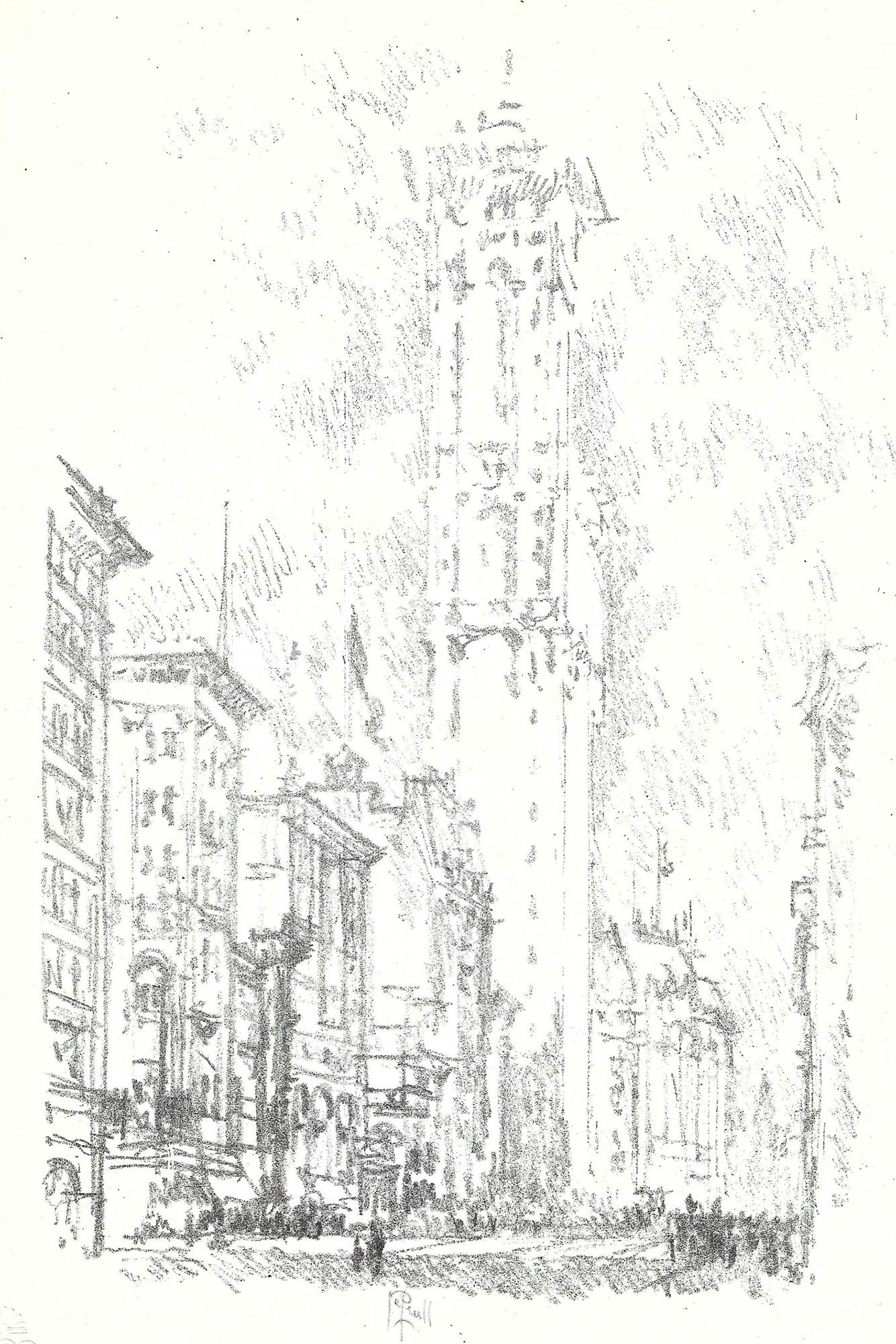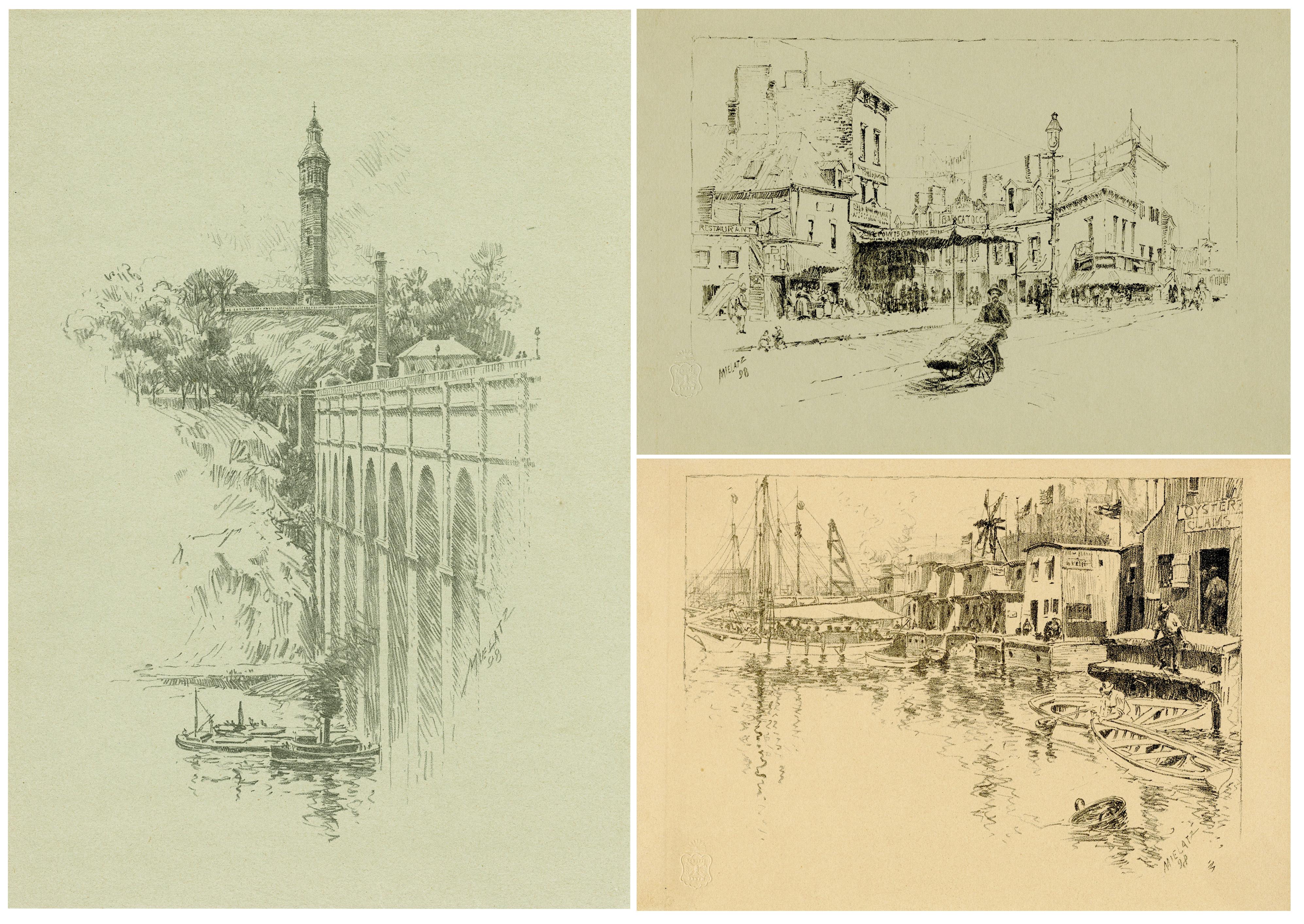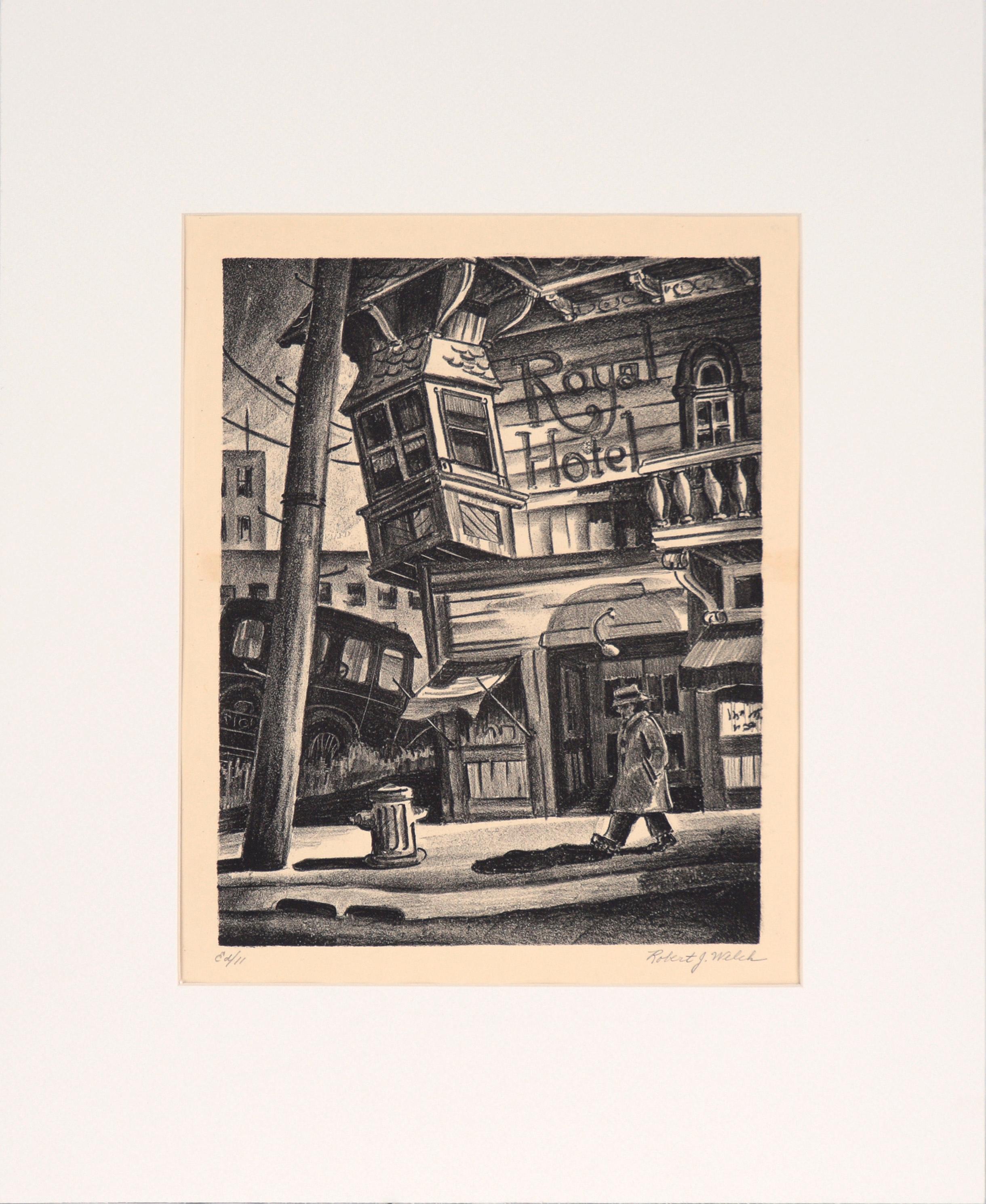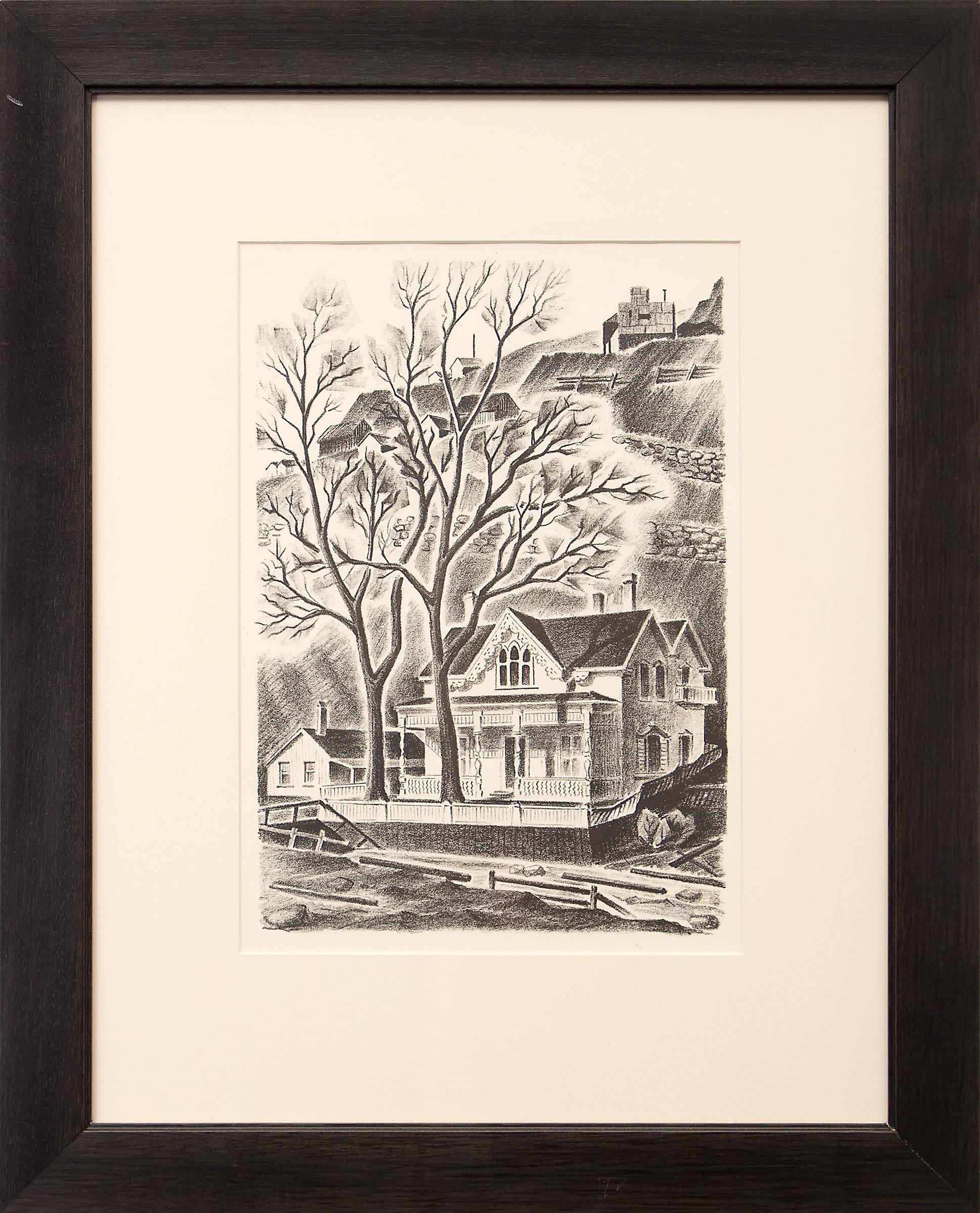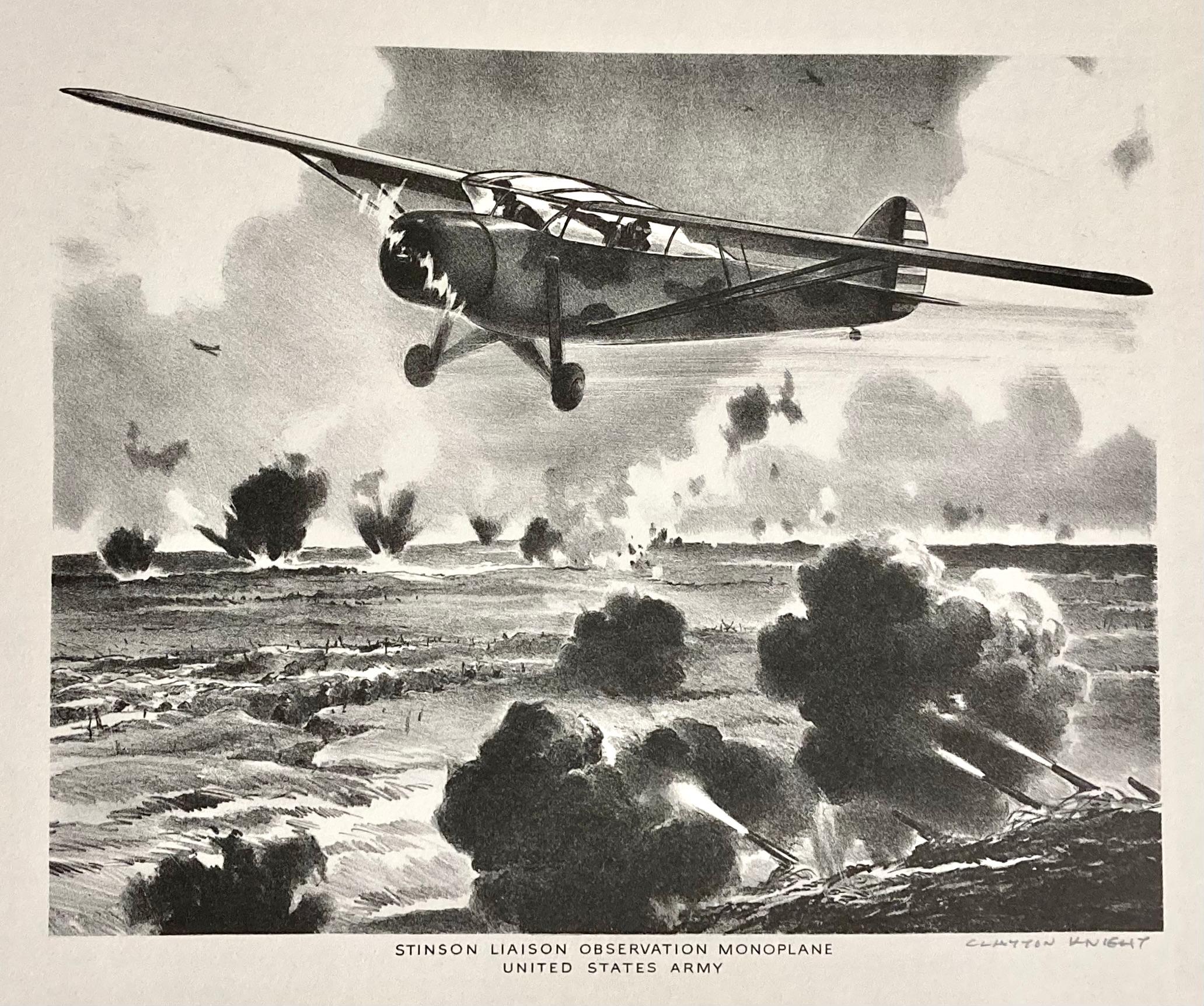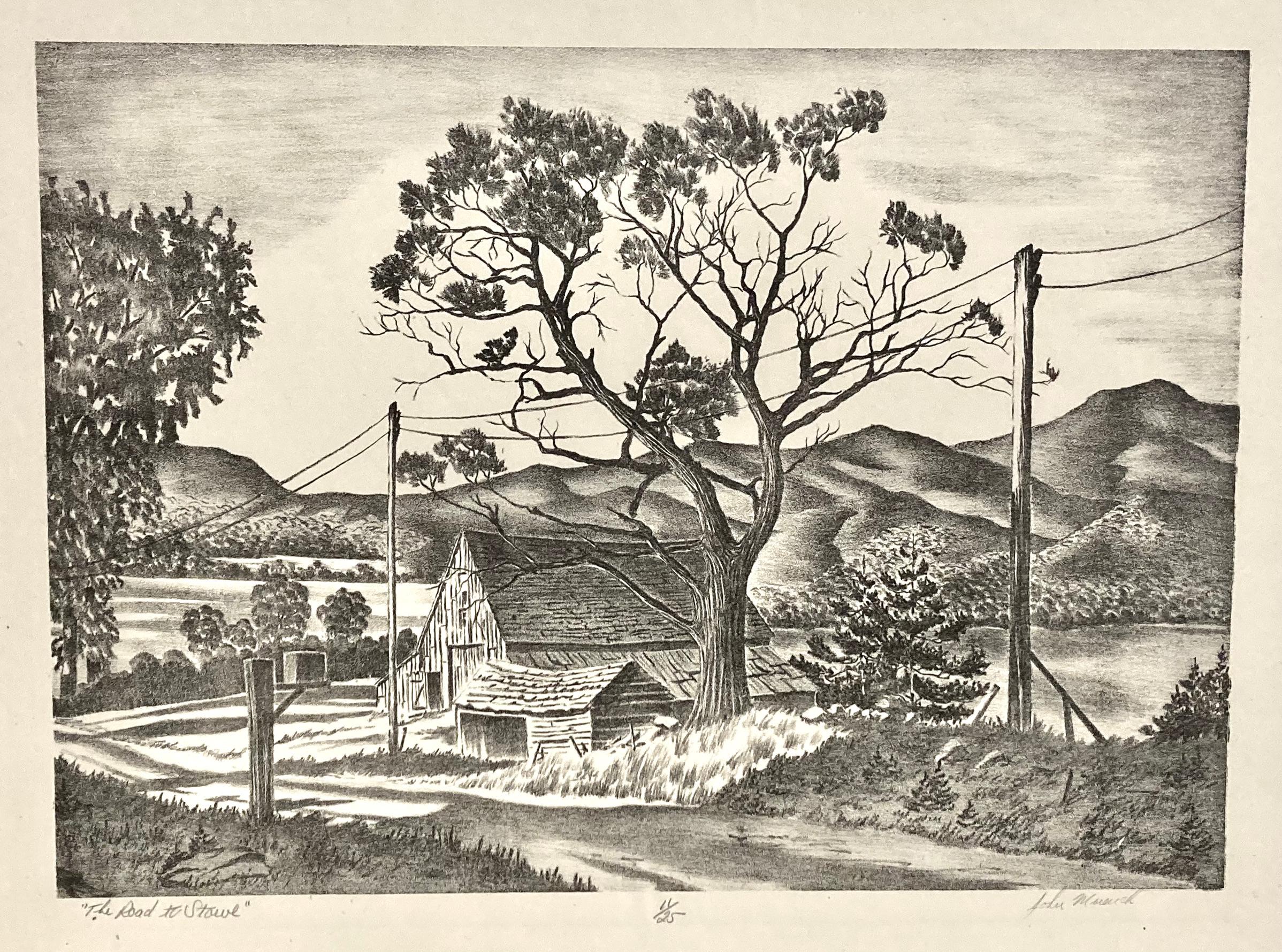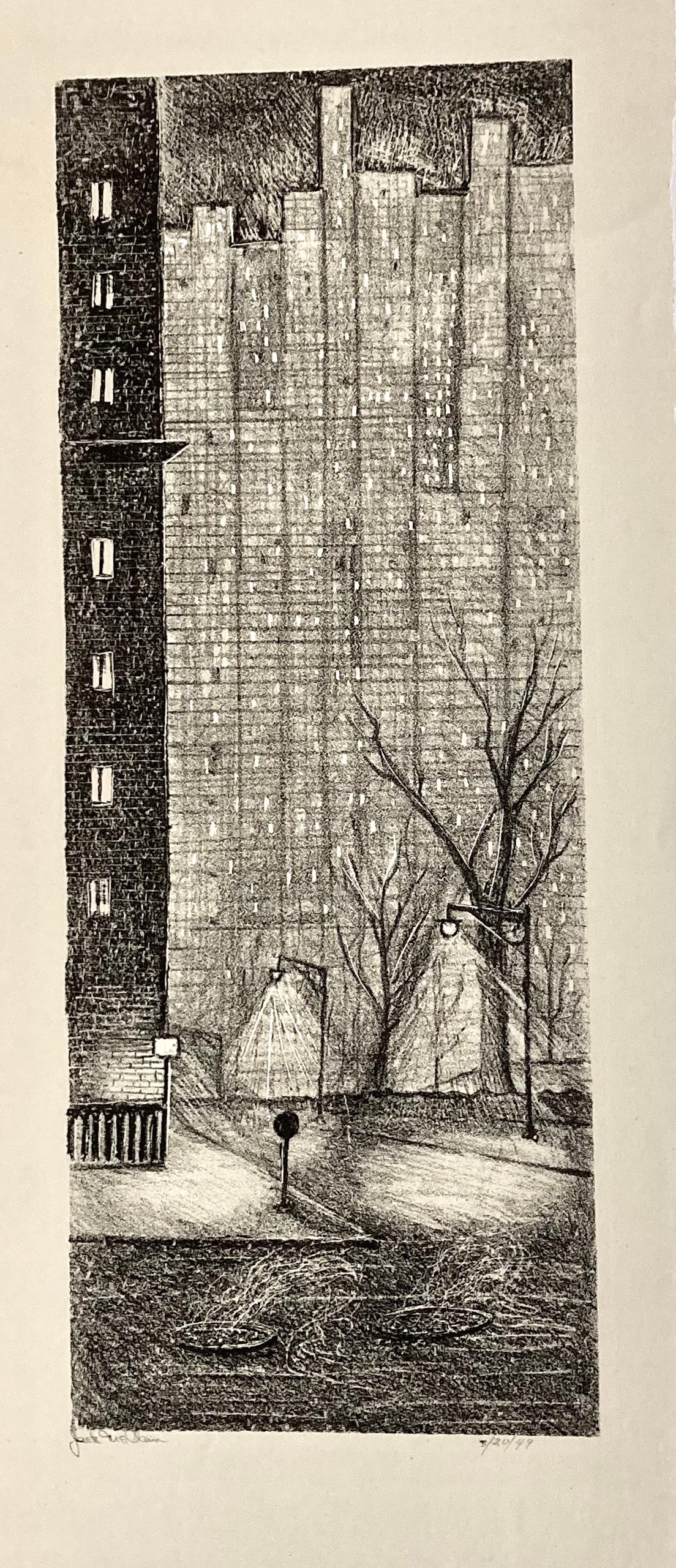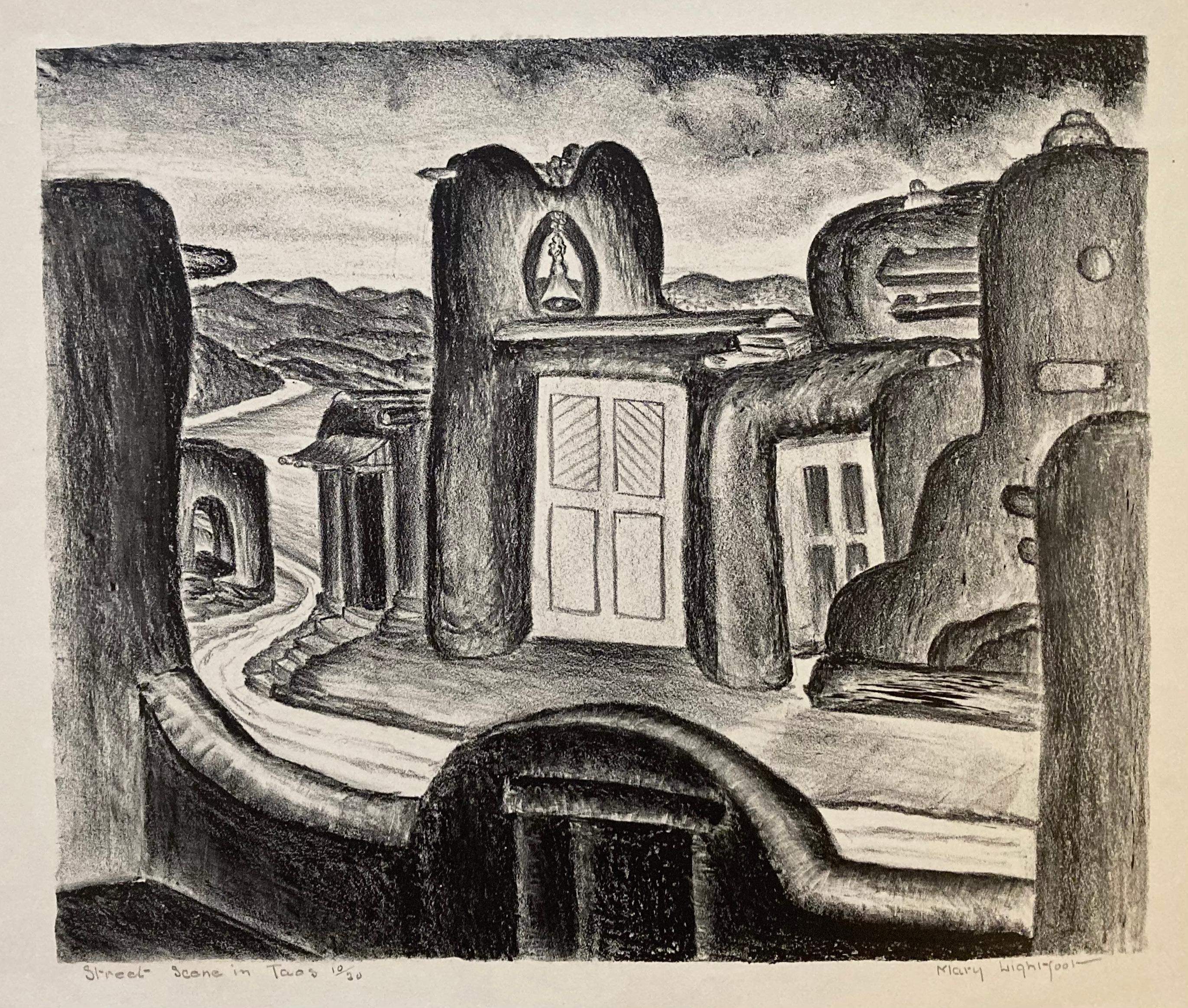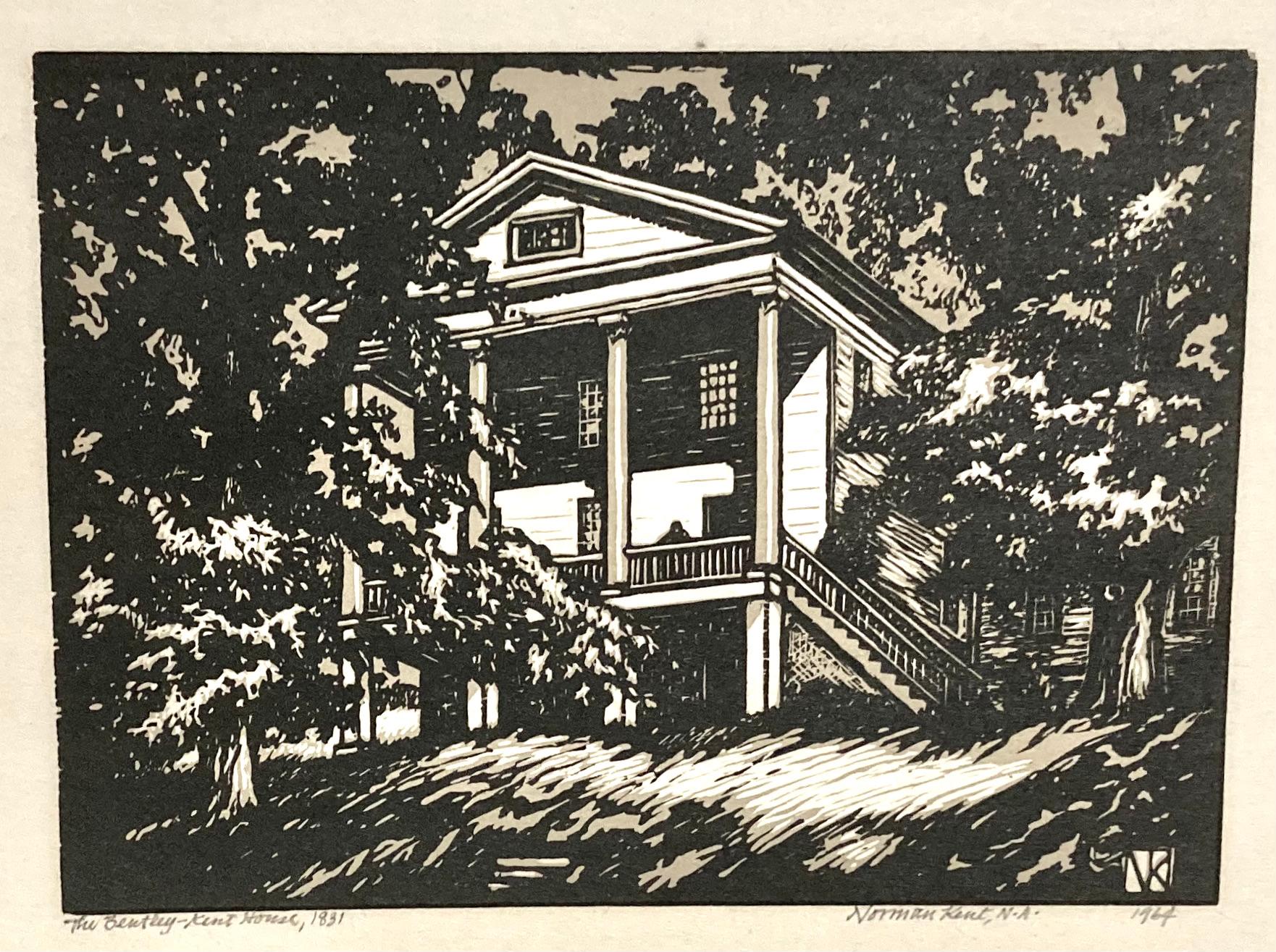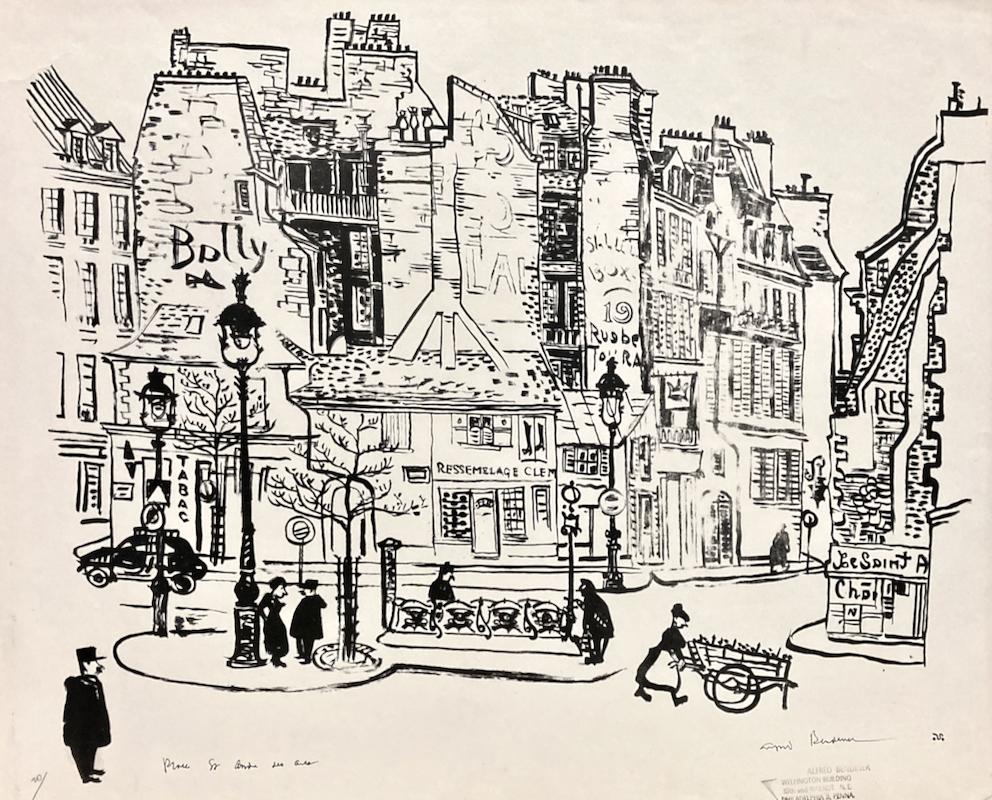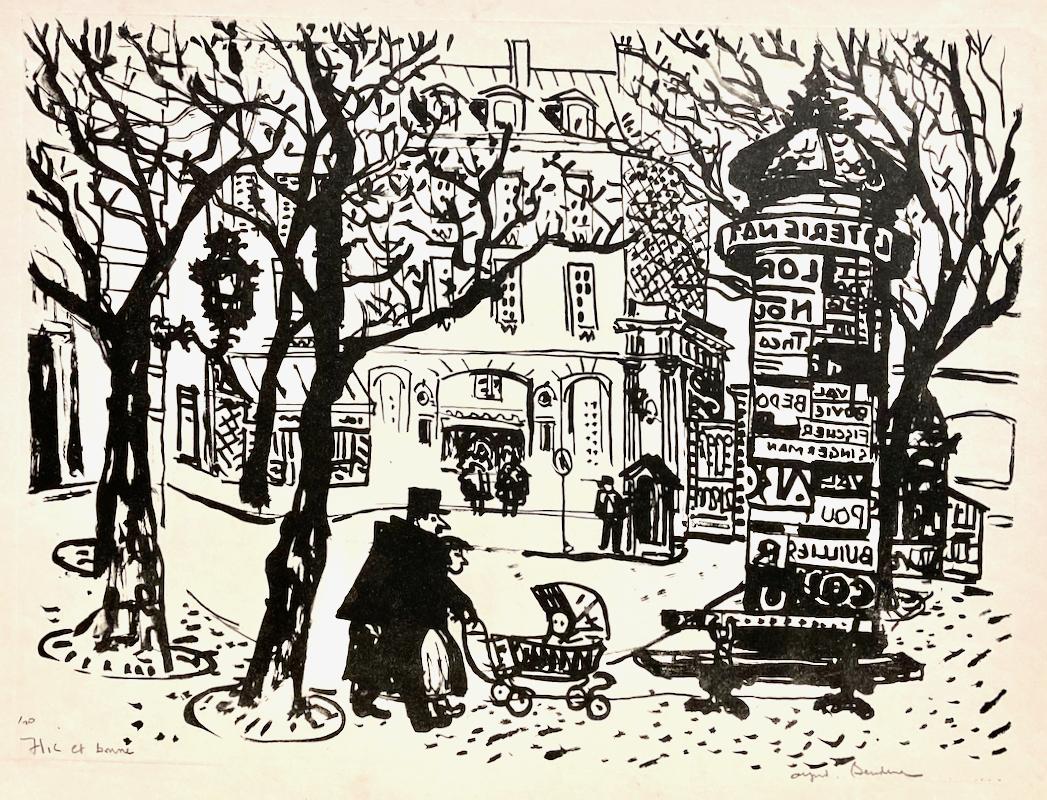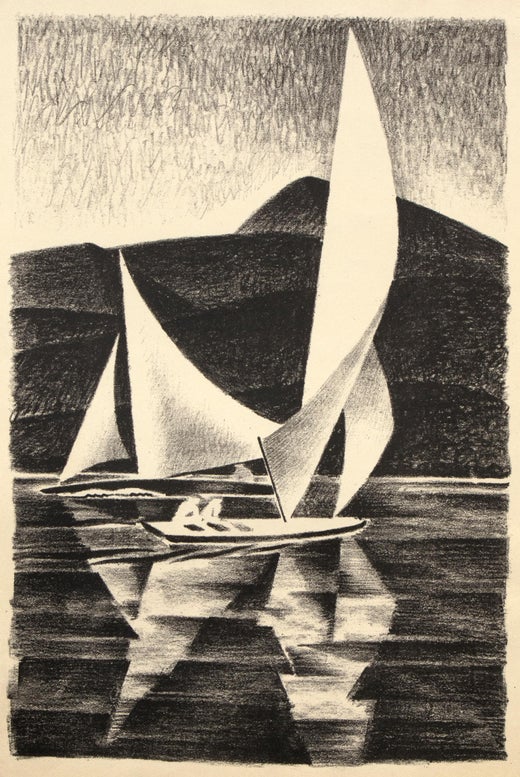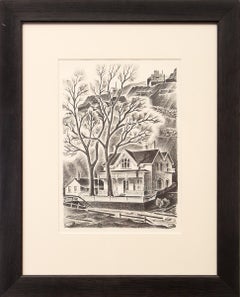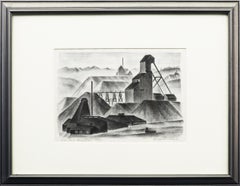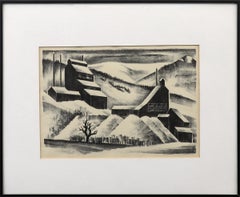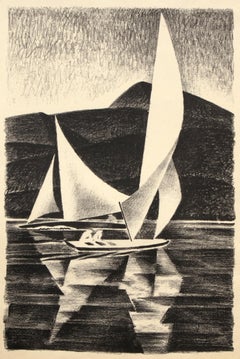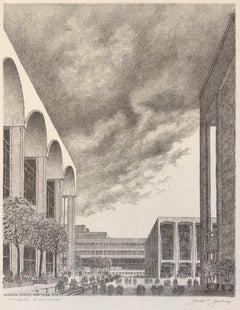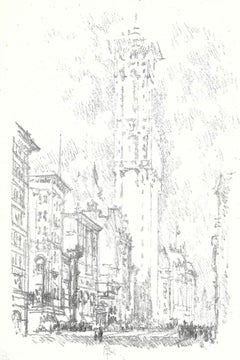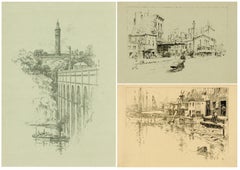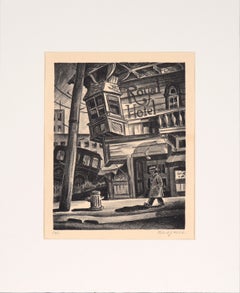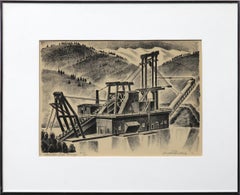
Colorado Gold Dredge, Breckenridge, Signed Black and White Mining Lithograph
View Similar Items
Want more images or videos?
Request additional images or videos from the seller
1 of 18
Arnold RönnebeckColorado Gold Dredge, Breckenridge, Signed Black and White Mining Lithograph1932
1932
$2,250List Price
About the Item
- Creator:Arnold Rönnebeck (1885 - 1947)
- Creation Year:1932
- Dimensions:Height: 17.25 in (43.82 cm)Width: 21.25 in (53.98 cm)Depth: 0.75 in (1.91 cm)
- Medium:
- Movement & Style:
- Period:
- Framing:Frame IncludedFraming Options Available
- Condition:
- Gallery Location:Denver, CO
- Reference Number:Seller: 263411stDibs: LU27310741152
Arnold Rönnebeck
Modernist sculptor, lithographer and museum administrator, Rönnebeck was a noted member of European and American avant-garde circles in the early twentieth century before settling in Denver, Colorado, in 1926. After studying architecture at the Royal Art School in Berlin for two years beginning in 1905, he moved to Paris in 1908 to study sculpture with Aristide Maillol and Émile-Antoine Bourdelle. While there he met and befriended American modernist painter, Marsden Hartley, of whom he sculpted a bronze head that was exhibited at the Salon d’Automne in Paris in 1912 and the following year at Hartley’s solo show of paintings at Alfred Stieglitz’s Gallery 291 in New York. After World War I Rönnebeck traveled in Italy with German writer, Max Sidow, and German poet, Theodor Daubler, doing a series of drawings of Positano and the Amalfi Coast that formed the basis for his lithographs on the subject. The death of his finacée, the young American opera singer Alice Miriam in 1922 and his own family’s increasing financial problems in post-World War I Germany led him to immigrate to the United States in 1923. After living briefly with Miriam’s family in Washington, DC, he moved to New York where he became part of the avant-garde circle around Alfred Stieglitz. In the summer of 1925, as the guest of Mabel Dodge Luhan, Rönnebeck first saw Taos, New Mexico, which Marsden Hartley had encouraged him to visit. It was there that he met his future wife, Louise Emerson, an easel painter and muralist. A year later they were married in New York before relocating to Denver. He served as director of the Denver Art Museum from 1926 to 1930 where he invited Marsden Hartley to lecture on Cézanne’s art in 1928. Rönnebeck fostered the development of the museum’s collection of American Indian art and the curation of modernist art exhibitions. In addition to his work at the museum, he was professor of sculpture at the University of Denver’s College of Fine and Applied Arts from 1929 to 1935, and wrote a weekly art column in the Rocky Mountain News. In Colorado, the subject matter of his lithographs became the state’s landscape and its mining towns, as well as Native Americans from the pueblos in neighboring New Mexico. By the early 1930s Colorado’s old mining towns became a popular genre for artists because they were easily accessible, and their architectural components provided a welcome break from the nineteenth-century panoramic landscape tradition and the overwrought cowboy-and-Indian subject matter of the previous generation. As an amateur actor and music enthusiast, Rönnebeck had an additional connection with Central City. In June 1947, some five months before his death, the Denver Art Museum organized a solo exhibition of his sculptures, watercolors and prints. © copyright Stan Cuba for David Cook Galleries
About the Seller
5.0
Gold Seller
Premium sellers maintaining a 4.3+ rating and 24-hour response times
Established in 1979
1stDibs seller since 2013
290 sales on 1stDibs
Typical response time: 13 hours
Authenticity Guarantee
In the unlikely event there’s an issue with an item’s authenticity, contact us within 1 year for a full refund. DetailsMoney-Back Guarantee
If your item is not as described, is damaged in transit, or does not arrive, contact us within 7 days for a full refund. Details24-Hour Cancellation
You have a 24-hour grace period in which to reconsider your purchase, with no questions asked.Vetted Professional Sellers
Our world-class sellers must adhere to strict standards for service and quality, maintaining the integrity of our listings.Price-Match Guarantee
If you find that a seller listed the same item for a lower price elsewhere, we’ll match it.Trusted Global Delivery
Our best-in-class carrier network provides specialized shipping options worldwide, including custom delivery.More From This Seller
View AllArnold Ronnebeck Lithograph of Gregory Point, Colorado, 1930s Modernist Print
By Arnold Rönnebeck
Located in Denver, CO
This original 1930s lithograph by renowned modernist artist Arnold Ronnebeck (1885–1947) captures a historic home at Gregory Point, near Central City, Colorado. Part of a limited edi...
Category
1930s American Modern Landscape Prints
Materials
Lithograph, Paper
Silver Mine, Russell Gulch, CO (12/25) 1930s American Modern Lithograph Print
By Arnold Rönnebeck
Located in Denver, CO
"Silver Mine, Russell Gulch (12/25)" is a captivating black and white lithograph by American artist Arnold Ronnebeck. The piece features a mining scene in Russell Gulch, Colorado, wi...
Category
1930s American Modern Figurative Prints
Materials
Lithograph
Mine Near Continental Divide – 1930s Winter Landscape of Colorado Mountains
By Arnold Rönnebeck
Located in Denver, CO
This rare 1933 lithograph by renowned modernist artist Arnold Rönnebeck captures a dramatic black-and-white winter scene of a Colorado mountain mine, blanketed in snow. The bold cont...
Category
1930s American Modern Landscape Prints
Materials
Lithograph
Arnold Ronnebeck 1930s Lithograph – Grand Lake Colorado Yacht Races, WPA Era
By Arnold Rönnebeck
Located in Denver, CO
This striking vintage 1930s black-and-white lithograph by celebrated Colorado artist Arnold Ronnebeck (1885–1947) captures the dynamic energy of the Grand Lake...
Category
1930s American Modern Landscape Prints
Materials
Lithograph
Saturday Morning Market, Taos Plaza, New Mexico, 1950s Figural Linocut Print
By Barbara Latham
Located in Denver, CO
"Saturday Morning (Market, Taos Plaza, New Mexico)" is a striking 1950s modernist linocut print by renowned New Mexican artist Barbara Latham. This vivid print captures a bustling Sa...
Category
Mid-20th Century American Modern Figurative Prints
Materials
Linocut
"Prospector's Cabin" – 1937 WPA-Era Lithograph by Archie Musick, Modernist Art
By Archie Musick
Located in Denver, CO
This original, signed lithograph titled "Prospector's Cabin" was created circa 1937 by acclaimed American Modernist artist Archie Musick (1902–1978). A powerful example of WPA-era ar...
Category
1930s American Modern Landscape Prints
Materials
Lithograph
You May Also Like
Acropolis Americana - Lincoln Center, New York 1975
By Gerald Geerlings
Located in Middletown, NY
Zinc lithograph on cream wove paper, 12 3/4 x 10 inches (272 x 253 mm), full margins. Signed and titled in pencil, lower margin. One work from the series titled "Salute to New York,"...
Category
20th Century American Modern Landscape Prints
Materials
Handmade Paper, Lithograph
The Times Building
By Joseph Pennell
Located in Middletown, NY
An early 20th century view of Times Square.
The Society of Iconophiles, 1904.
Lithograph in black ink on tissue-thin, laid Japon paper with an anchor and numeral 48 watermark, 8 3/...
Category
Early 20th Century American Modern Landscape Prints
Materials
Handmade Paper, Laid Paper, Lithograph
Ten of views of Manhattan (10).
By Charles Frederick William Mielatz
Located in Middletown, NY
The Society of Iconophiles (New York, 1894–1936), 1898. Each a lithograph printed on grayish-green, or white wove paper each sheet 10 3/4 x 7 1/2 inches (274 x 190 mm), each with ful...
Category
Early 20th Century American Modern Landscape Prints
Materials
Handmade Paper, Lithograph
Royal Hotel - New Orleans 1920s Depression Art Lithograph in Ink on Paper
Located in Soquel, CA
Royal Hotel - New Orleans 1920s Depression Art Lithograph in Ink on Paper
Dramatic street scene with a man wearing a trench coat and hat by Robert J We...
Category
Late 20th Century American Modern Landscape Prints
Materials
Paper, Lithograph
Clayton Knight, Stinson Liaison Observation Monoplane
Located in New York, NY
Clayton Knight drew a careful rendering of the plane -- even showing how it would look in the air as it banked.
Edward Stinson was an accomplished, eve...
Category
1940s American Modern Figurative Prints
Materials
Lithograph
John Muench, The Road to Stow
Located in New York, NY
John Muench was a master at drawing on a lithographic stone. He was a New Englander and this is a classic subject both for him and for the area. The...
Category
Mid-20th Century American Modern Landscape Prints
Materials
Lithograph
Recently Viewed
View AllMore Ways To Browse
Kachina Native American
Frederick And Nelson
Hopi Kachina
Cemetery Cross
Native American Stone Head Sculpture
Vintage Hopi Kachina
Gladys Gray
Cuban Wood Sculpture
Kaiser Wilhelm
Reginald Marsh Etching
Copper Relief Panel
Aristide Maillol Lithograph
John Caldwell
Picasso Litho
Mexican Wood Mask
Picasso Print Signed Dove
Charles Frederick Worth
Cowboy Etching
